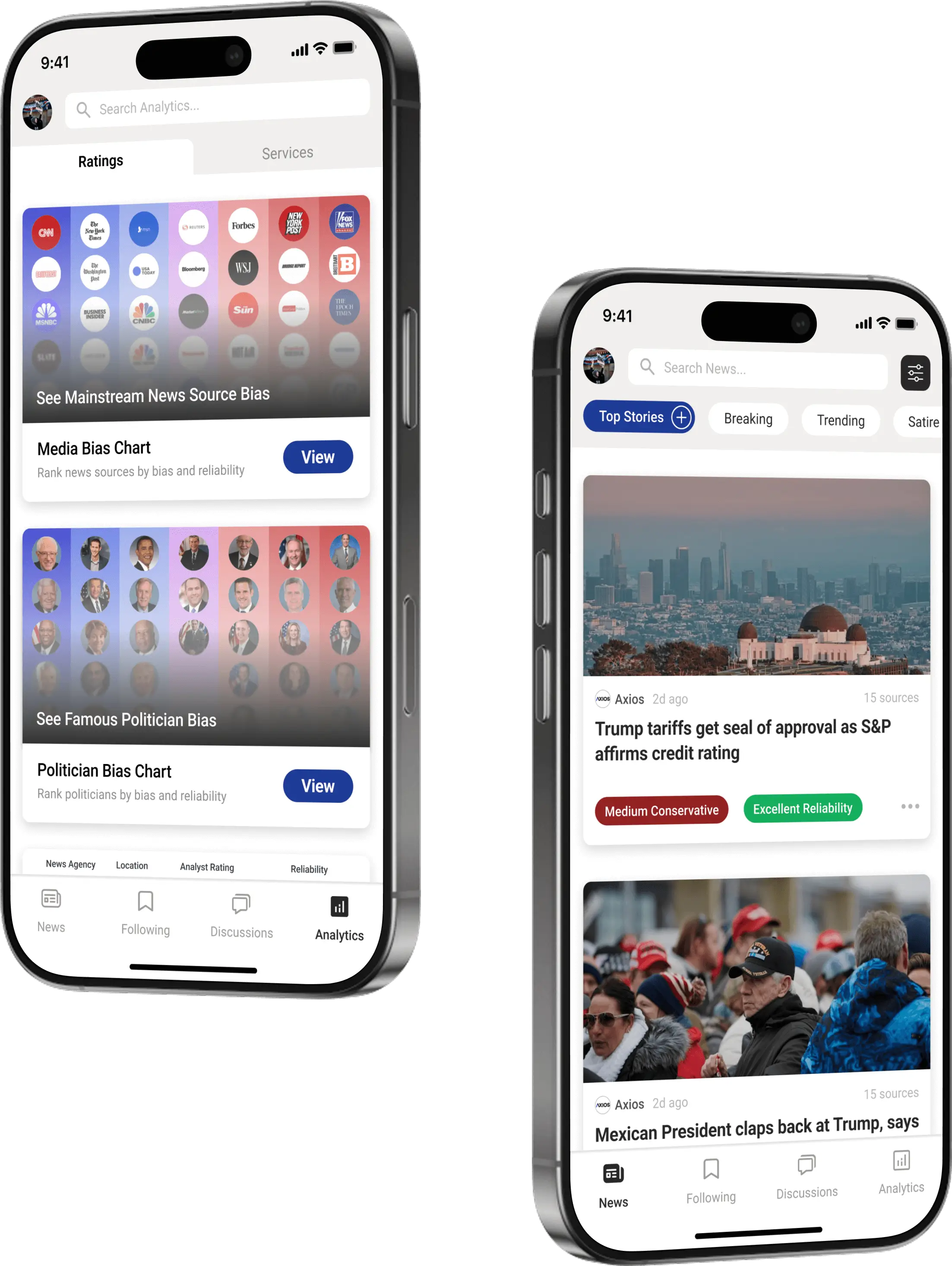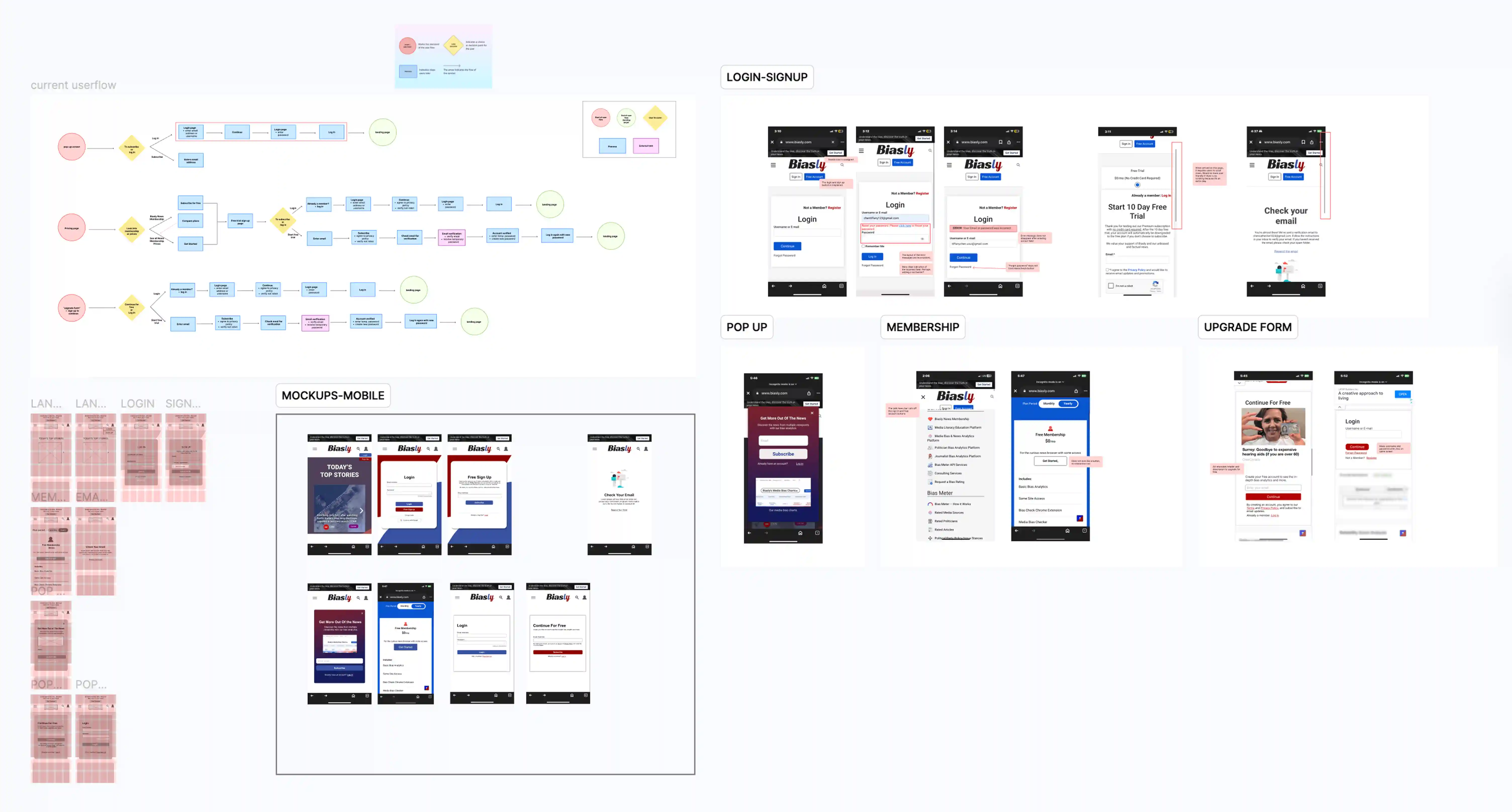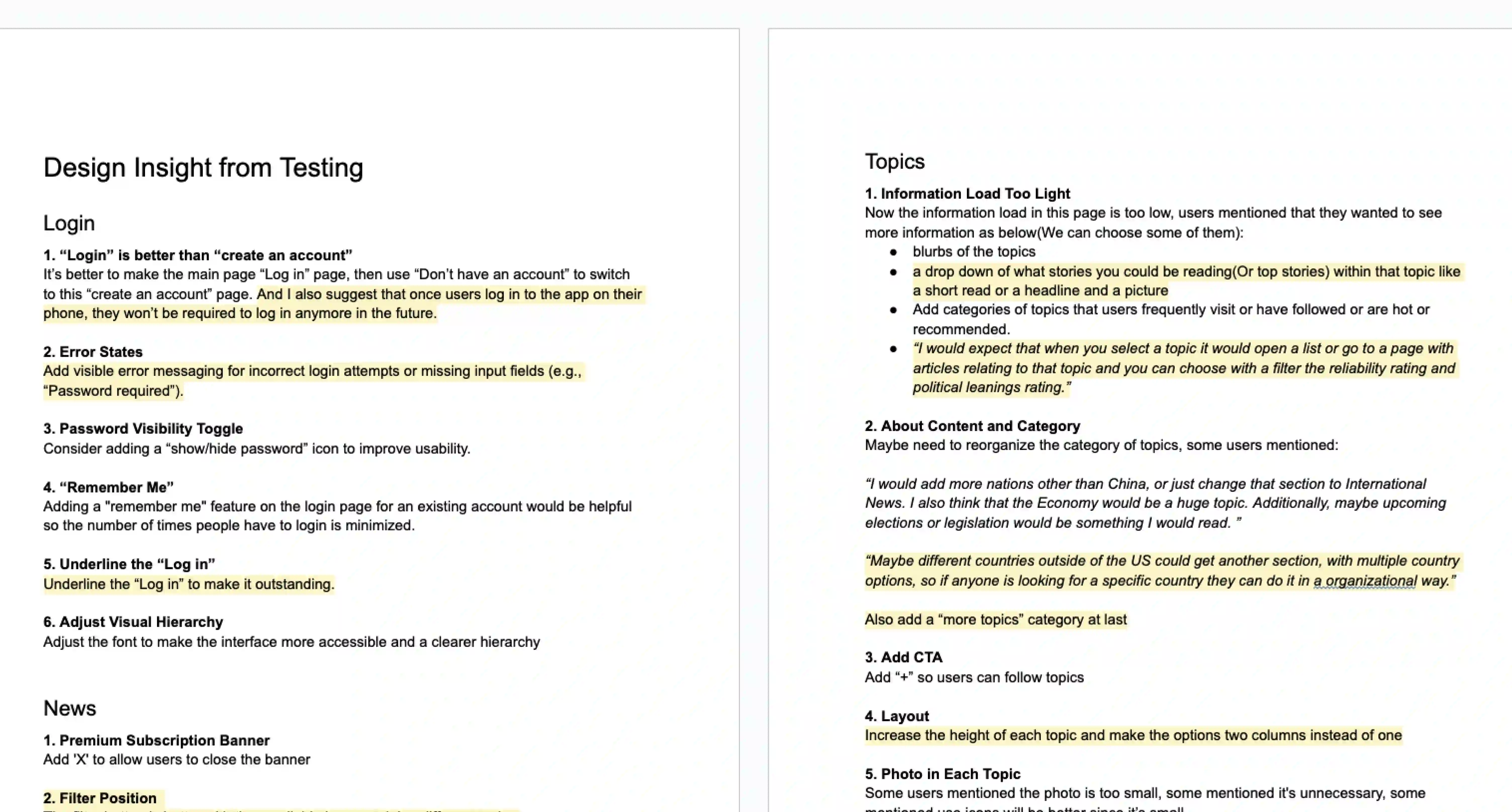BIASLY MOBILE APP

Project Title
Mobile App Design
Role
Product Designer Intern
Duration
2025.5 - 2025.8
Team
Mobile App Product Team
Tools
Figma, SwiftUI

Context
From B2B To B2C
Biasly is an AI-powered platform that identifies and evaluates biases in content from individuals like politicians, journalists, and businesses, promoting fairness and inclusivity across all media.
Originally designed for the B2B market, Biasly has now seen growing demand to expand into the B2C space. To meet the needs and behaviors of B2C users, designing a mobile app has become the key focus.
Expand User Base
Attract more users from the vast B2C market
Diversify Revenue
Income from a large user base with ad and data opportunities
Brand & Competition
Higher market penetration and brand visibility
Solution
Drawing Users In: Personalization, Engagement, and Monetization
Personalized News Feed with
AI-Driven Bias & Reliability Ratings
Deliver news and topics tailored to users' preferences—such as political orientation, topics of interest, and preferred sources—after applying AI-driven bias and reliability ratings.
Engaging Discussion Features to Boost User Retention
Increase user engagement through lightweight social features, including daily polls and misleading news sharing, fostering community interaction and discussion.
Product and Service Promotion for Monetization
Leverage user traffic to promote relevant products and services, enabling effective monetization strategies.
Currently in Beta Testing
The product is still in its Beta phase, actively being refined based on real-world feedback. Feel free to check out the live version through TestFlight, or explore the design prototype on Figma by following the links below:
Design Process
End-to-End Design Iteration with Cross-Functional Team
I led a design team of three members, collaborating closely with two UI designers, one product manager, and two full-stack developers. Our process began with low-fidelity prototypes and went through multiple iterations, with each design version undergoing testing. After each round of testing, we gathered design insights to inform the next iteration, ensuring continuous improvement and refinement of the product. This iterative approach allowed us to respond to user feedback and technical constraints, optimizing the overall design while aligning with both user needs and business goals.

